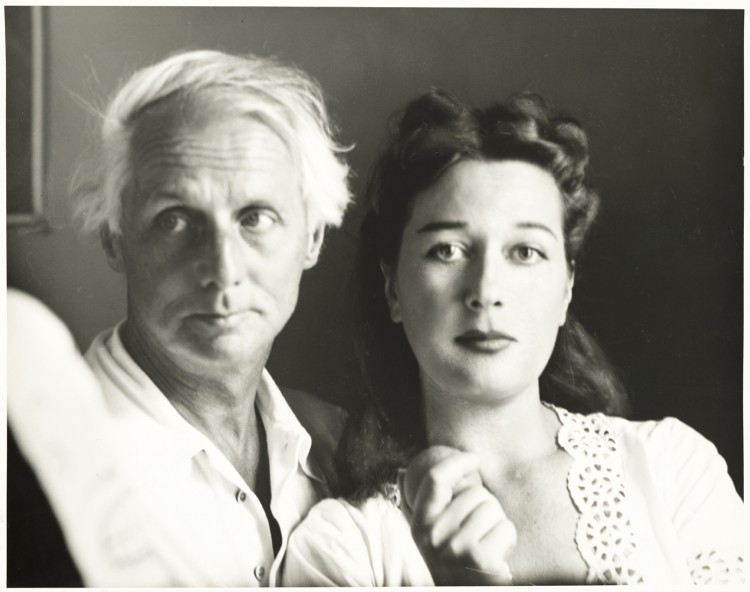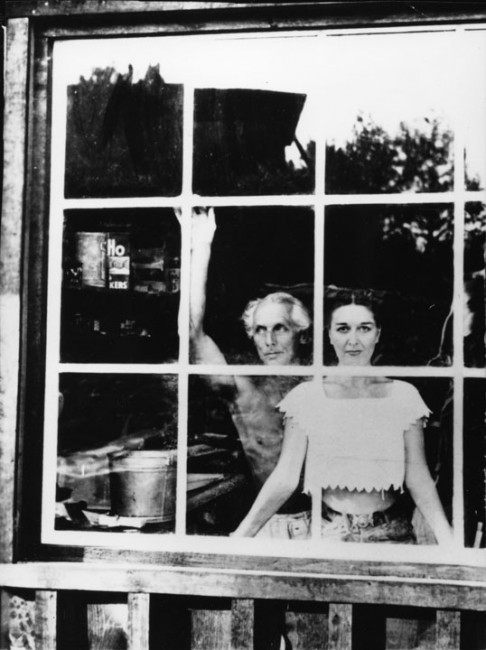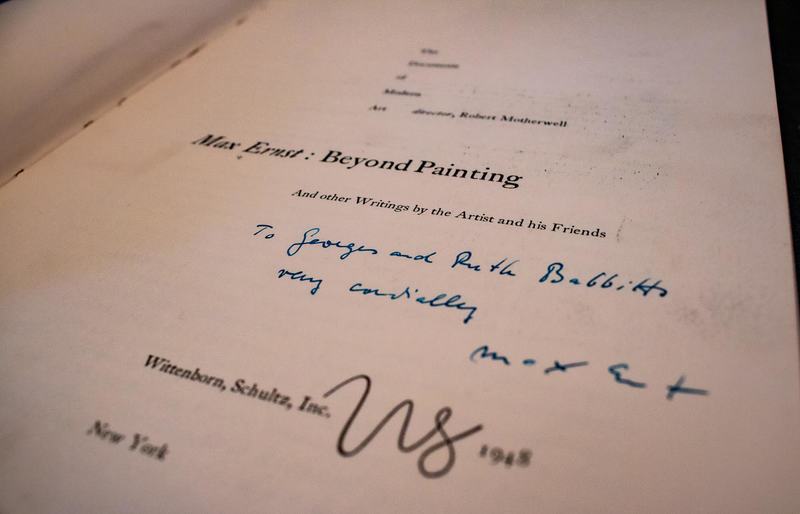Max Ernst
One of the most notable people in Dorothea Tanning's life was Max Ernst, Dorothea's husband of 30 years. Max Ernst, the middle child of nine, was born in Brühl, Germany in 1891, his family was devoutly Christian, and his father was an amateur painter and teacher. His father was a big part of who Max became, his disciplinary actions turning Max into a rebel, and his art turning Max into a painter. Max attended the University of Brohn and in about 1911 after befriending the artist August Macke he joined Die Rheinische Expressionisten. Inspired by post-impressionist artists like Picasso and Van Gough, Ernst started to develop his own art style until he was drafted in WWI and forced to fight for the duration of the war. After the war, Max returned home and married an art history student, Luise Straus, by 1919 Max had studied under Giorgio de Chirico in Munich, and with help from his friend Johannes Baargeld started the art movement known as Dada. In 1922 Max illegally moved into France despite failing to get the proper papers, he then entered a three-person relationship with Paul and Gala Éluard. Max and Luise’s marriage did not last long and despite having had their first and only child, Ulrich, they divorced in 1927. Later in 1927, he marries author Marie-Berthe Aurenche, their marriage like his previous one also did not last long, and he went on to marry Peggy Guggenheim in 1942.
When WWII broke out he was put into a camp by the French Government, before being released, only to be arrested by the Gestapo when Germany occupied France. He fleed with the help of his wife and a journalist by the name of Varian Fry, to the states where he lived in New York City where he met Dorothea Tanning. The love between Dorothea and Max was one of the fairy tales, Dorothea met Max at a party and later Max came to look at a painting she had created to see if it would be a good fit for a gallery his then-wife, Peggy Guggenheim, owned highlighting female surrealist art.
Below is an excerpt where she describes this meeting in her first autobiography Birthday.
"For the season was Christmas, 1942, and Max was my Christmas present.
It was snowing hard when he rang the doorbell. Choosing pictures for a show to be called Thirty Women (later Thirty-One Women), he was a willing emissary to the studios of a bouquet of pretty young painters who, besides being pretty, which they couldn’t help, we're also very serious about being artists.
'Please come in,' I smiled, trying to say it as if to just anyone. He hesitated, stamping his feet on the doormat. 'Oh, don’t mind the wet,' I added. 'There are no rugs here.' There wasn’t much furniture either, or anything to justify the six rooms, front to back. We moved to the studio, a livelier place in any case, and there on an easel was the portrait, not quite finished. He looked while I tried not to. At last, 'What do you call it?' he asked. 'I really haven’t a title.' 'Then you can call it Birthday.' Just like that."
Tanning, Dorothea. Birthday. Santa Monica [Calif.]: Lapis Press, 1986, p. 14.
Dorothea was Max's last and longest wife, they were married for 30 years before Max passed away in 1976. During their marriage, they spent time in the States until Max’s attempts at citizenship failed and they moved to France. It was during this time that Dorothea lived in Sedona with Max where they spent time creating for each other, with each other, and more. One notable creation of Max’s during this time was his book Beyond Painting, in which Max discusses his life, his painting process, and more. At the Northern Arizona University library, there is an original print of this book autographed by Max Ernst for Ruth and George Babbitt whose son donated the book.


